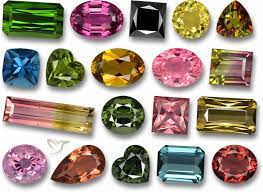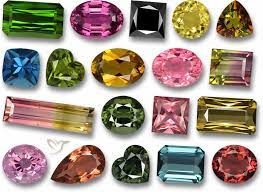Tourmaline

Like Topaz, Tourmaline also comes in a wide variety of color ranges. They are one of the most beautiful gemstones present. Tourmalines have a strong color zoning which can result in several different types of tourmalines like- particolored tourmaline (having 2-3 dominant hues in the same stone). They have been a major role in the modern world of jewelry. They act as good substitutes for the Big 3 stones. Other than that, some tourmalines like the Paraiba Tourmaline, which is mined only in Brazil, can be as expensive as any ruby, sapphire, or emerald. It is known for its brilliant greenish-blue hue. Rubellite (red color tourmaline) acts as a good substitute for Ruby and goes very well with authentic Indian wear. Indicolite (violet-blue tourmaline) acts as a good substitute for sapphire. However, chrome tourmaline (dark green tourmalines) is known for its vibrant green color and acts as an excellent substitute for Emerald. Some well-formed tourmaline roughs are more valuable than their fashioned gems because of their long tubular structure with vertical striations on them. Some tourmalines show the Casey effect (Chatoyancy) in them like Lehsuniya because of their long tubular inclusions. Catseye tourmaline is a remarkable stone known for its color zoning, vibrant color, and the cat's eye effect.

The major of the world’s gem-quality tourmaline comes from Brazil including the Paraiba. Nigeria and Mozambique are the world’s economically important tourmaline sources.

The two most important treatments of tourmaline are heating and irradiation. If a tourmaline has lots of liquid inclusions, it cannot withstand heating. Therefore, the presence of liquid inclusions proves that the stone is not heated.

Latest Update
- Amethyst (Kathela)
- Aquamarine
- Catseye chrysoberyl (Lehsuniya)
- Citrine(Sunelha)
- Coral (Moonga)
- Diamond (Heera)
- Emerald (Panna)
- Hessonite (Gomed)
- Lapis lazuli (Lajvart)
- Morganite
- Opal
- Pearl (Moti)
- Ruby (Manik)
- Sapphire (Neelam)
- Topaz
- Tourmaline
- Turquoise (Firoza)
- Yellow sapphire(Pukhraj)
Feature Image

